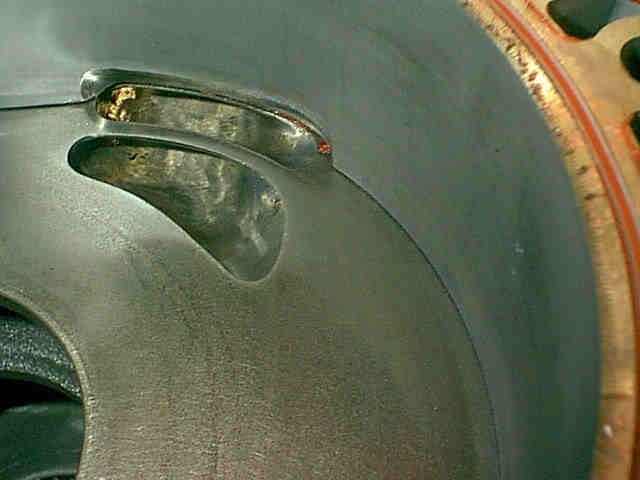|
|
Thanks Lynn!
Very informative. Bridge between side and rotor housings. A wonder that
the round side seals and apex seals stay in place.
For our application I would guess that a combination of a peripheral
port and standard or street ported side ports might do the job, since
we mostly anyway make our own intake manifolds.
Finn
Lehanover@aol.com wrote:
In a message dated 11/19/2003 10:17:54 PM Eastern Standard
Time, finnlassen@netzero.net writes:
This
brings up a question I have: What is bridge porting?
I understand side porting and peripheral porting.
Finn
This is a picture of one in an end housing. This is called a "J"
Bridgeport because the change also involves cutting away part of the
rotor housing to match up to the part of the port cut into the cast
iron. The inner compression "O" ring and the outer water "O" ring are
cut away and only the outer edge of the outer "O" ring groove is left
to do any sealing. A film of GE 100% Silicon (I use tube and tile
caulk) is used to seal off the water from the intake runner. Some sort
of blocking is used at the ends of the compression "O" ring groove to
prevent the "O" ring from extruding into the runner. The Pro builders
use a drilled hole and a role pin. I made a punch point with a curved
side and use it to stand up a burr in the floor of the "O" ring groove.
No problems so far (since 1980).
Practice on some junk iron and housings. The whole thing is done with a
drill press and a die grinder. There are many pictures on the Paul Yaw
and Racing Beat web sites. They even sell patterns that locate on two
bolt holes to get you started.
In addition to increasing the port opening area into the engine, there
is a big increase in the intake open timing, and intake/exhaust
overlap. You can start with a small port that does not involve the
rotor housing at all. Then if you want more power, go back in and open
it up through the compression "O" ring, and if that is not enough, do
as the above. Even with a very exotic port job, and limited choke size,
there is 173 HP at 6,500 RPM available from the smaller 12A engine.
Lynn E. Hanover

Homepage: http://www.flyrotary.com/
Archive: http://lancaironline.net/lists/flyrotary/List.html
|
|